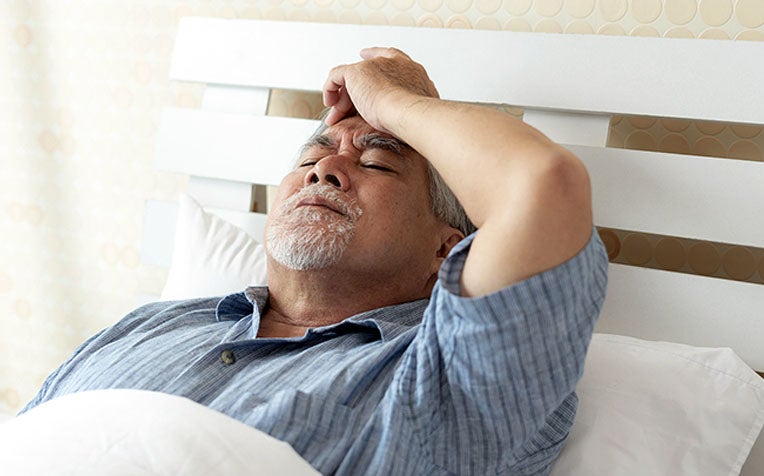
Stroke can happen any time, even during sleep. Such strokes are called 'wake-up' strokes with over 1,000 cases happening annually in Singapore.
Imagine going to bed feeling fine then waking up with symptoms of stroke. This happens to more than 1,000 people in Singapore every year and is known as a 'wake-up' stroke.
"When stroke strikes, it is often painless, so if it happens while someone is asleep it usually does not wake them up. The person only realises that something is wrong when they experience the symptoms of stroke when getting up, such as weakness on one side of the body as they get out of bed, noticing one side of their face drooping while looking in the mirror, or speech difficulties when they talk to someone," explains Associate Professor Deidre Anne De Silva, Head and Senior Consultant, Department of Neurology, NNI @ SGH Campus, a member of the SingHealth group.
If you or a family member has any of these symptoms at any time, call 995 immediately for an emergency ambulance. Fast emergency care increases the chance of a good recovery, as some treatments need to be given within a certain amount of time from when stroke symptoms first start.
When the stroke happens during sleep, there are no witnesses to advise medical staff on when symptoms started, but brain scans can help doctors determine how long ago the stroke happened and sometimes treatment can still be given to dissolve or remove the blood clot that caused the stroke.
Patients with wake-up stroke who receive such treatment have less long-term disability compared to those who are not able to have the treatment because they arrive at hospital too late. That is why it is so important to seek emergency care immediately when symptoms of stroke are first seen – do not go back to bed to try to sleep off the symptoms!
Why does stroke happen during sleep?
A stroke can happen to anyone at any time. We spend about 6 to 8 hours asleep every night – this is a significant proportion of our time and explains why a stroke sometimes occurs during sleep.
In addition, obstructive sleep apnoea (OSA) can increase stroke risk during sleep. OSA causes breathing to be reduced or stop temporarily. This results in less oxygen in the blood, increasing the possibility of stroke. Snoring and daytime sleepiness are common signs of OSA. For more information about OSA, check out this article.
OSA can also trigger an irregular heart rhythm pattern called atrial fibrillation which is a risk factor for stroke. Atrial fibrillation causes blood to pool in the heart chambers making it easier for blood clots to form. For more information about atrial fibrillation and its link to stroke, check out this article.
Both atrial fibrillation and OSA can be treated with medication, medical devices and / or lifestyle changes, lowering your risk of stroke and other health complications.
Ref: L20
Check out other articles on stroke:
4 Facts About Stroke You Need to Know
How to Spot a Stroke? Think F.A.S.T
Beware of Mini Stroke – TIA (Transient Ischaemic Attack)
Suffered a Stroke? 5 Questions to Ask Your Doctor
What to Expect When a Stroke Occurs
Contributed by


















 Get it on Google Play
Get it on Google Play